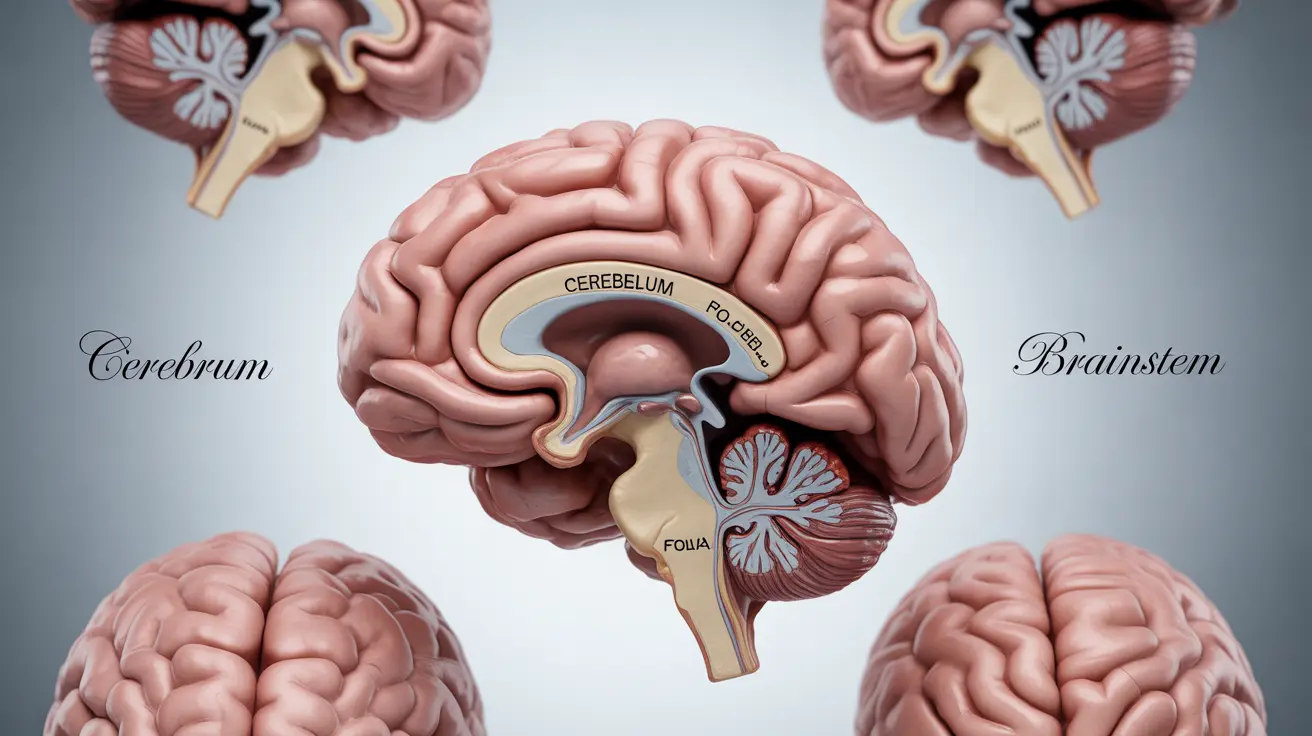Cerebellar hypoplasia is a neurological condition characterized by an underdeveloped or smaller-than-normal cerebellum, the part of the brain responsible for coordination, balance, and various motor functions. This condition can present either during fetal development or at birth, significantly impacting a person's movement and coordination abilities throughout their life.
Understanding cerebellar hypoplasia is crucial for both medical professionals and families affected by this condition, as early intervention and appropriate support can greatly improve quality of life and developmental outcomes.
Understanding the Cerebellum's Role
The cerebellum, often called the "little brain," plays a vital role in coordinating movement, maintaining balance, and controlling motor learning. When this structure doesn't develop properly, it can lead to various challenges in everyday activities and developmental milestones.
Signs and Symptoms
Physical Symptoms
The physical manifestations of cerebellar hypoplasia can vary significantly among individuals, but commonly include:
- Poor balance and coordination
- Irregular or delayed walking
- Tremors or shaking
- Unusual eye movements
- Difficulties with fine motor skills
- Problems with speech articulation
Developmental Impacts
Beyond physical symptoms, cerebellar hypoplasia can affect various aspects of development:
- Delayed motor milestone achievement
- Speech and language challenges
- Learning difficulties
- Cognitive processing variations
- Social interaction challenges
Diagnosis and Assessment
Diagnosing cerebellar hypoplasia typically involves several steps and medical professionals:
- Neurological examination
- Brain imaging (MRI or CT scans)
- Genetic testing
- Developmental assessments
- Physical and occupational therapy evaluations
Treatment Approaches
Medical Management
While there is no cure for cerebellar hypoplasia, various treatment approaches can help manage symptoms and improve quality of life:
- Physical therapy
- Occupational therapy
- Speech and language therapy
- Adaptive equipment and mobility aids
- Medications for specific symptoms
Early Intervention
Early intervention is crucial for children with cerebellar hypoplasia. This may include:
- Developmental therapy
- Educational support services
- Sensory integration therapy
- Social skills training
- Family support services
Living with Cerebellar Hypoplasia
Managing cerebellar hypoplasia requires a comprehensive approach that includes:
- Regular medical monitoring
- Consistent therapy sessions
- Educational accommodations
- Home modifications
- Support group participation
Frequently Asked Questions
What are the common symptoms and signs of cerebellar hypoplasia in children?
Common symptoms include poor balance, coordination difficulties, delayed walking, irregular eye movements, and challenges with speech development. Children may also experience tremors and difficulties with fine motor skills.
What causes cerebellar hypoplasia and how is it diagnosed?
Cerebellar hypoplasia can be caused by genetic factors, infections during pregnancy, or environmental factors. Diagnosis typically involves brain imaging (MRI or CT scans), genetic testing, and comprehensive neurological examinations.
How is cerebellar hypoplasia treated and what therapies can help manage the condition?
Treatment focuses on managing symptoms through various therapies including physical, occupational, and speech therapy. Additional interventions may include adaptive equipment, medications for specific symptoms, and educational support services.
Can cerebellar hypoplasia be inherited, and what genetic factors are involved?
Yes, cerebellar hypoplasia can be inherited. Several genetic mutations have been identified that can cause this condition. Genetic counseling may be recommended for families with a history of the condition.
What support and preventive measures can caregivers take for someone with cerebellar hypoplasia?
Caregivers can provide support through maintaining regular therapy appointments, creating safe home environments, working with educational professionals, and participating in support groups. Preventive measures include regular medical check-ups and early intervention services.




